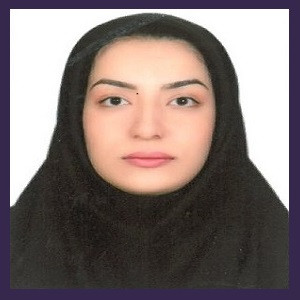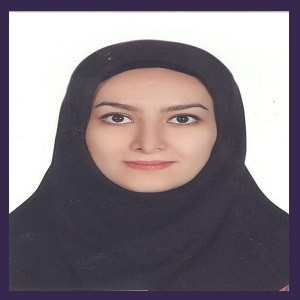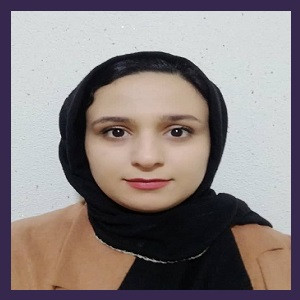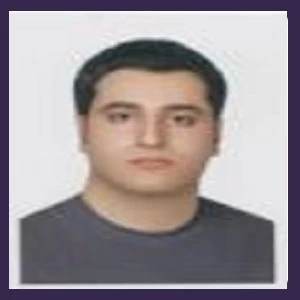آخرین مطالب
آقای فرشید کریمی(Comparison of Intraocular Pressure Changes Due to Exposure to Mobile Phone Electromagnetics Radiations in Normal and Glaucoma Eye)

Comparison of Intraocular Pressure Changes Due to Exposure to Mobile Phone Electromagnetics Radiations in Normal and Glaucoma Eye
Background and Aim: To investigate the effects of electromagnetic waves (EMWs) emitted by a mobile phone on the Intraocular pressure (IOP) in the eyeball
Methods: This quasi-experimental study was conducted on 166 eyes from 83 individuals in the 40 to 70 age range who referred to “Khatam-al-Anbia Hospital,Mashhad,Iran” in 2016. There were two groups of participants, the first one consisted of 41 subjects who had normal eyes while the second one comprised 42 participants who suffered from open-angle glaucoma disease. The IOP in both groups was measured and recorded by a specialist before and after talking 5 minutes on the cellphone with the help of the Goldman method. Statistical analysis such as paired t-test and ANOVA was performed and all tests are statistically significant at (P < 0.05). For this purpose, the SPSS software (version 16) was applied
Results: IOP in the glaucoma eye (42 eyes) ipsilateral to mobile phone before and after the intervention was 18.64±6.7 and 23.53±6.3 respectively (p<0.001). But IOP in the control group (41 eyes) ipsilateral to mobile phone before and after the intervention was 12.95±3.5 and 13.39±2.8 respectively (p=0.063). IOP change in the opposite glaucomatous eye to mobile phone in glaucoma group (39 eyes) and normal group (44 eyes) was not significantly different before and after the phone call (p=0.065, p=0.85, respectively)Conclusion: we found that the acute effects of EMWs emitted from the mobile phones can significantly increase the IOP in glaucoma eye, while such changes were not observed in normal eyes
Farshid Karimi1 *, Shokoohi-Rad Saeed 2
- MSc. Department of optometry,Mashhad University of Medical Sciences, Mashhad
- MD;Assistant Professor of Ophthalmology;Eye Research Center ,Mashhad University of Medical Sciences,Mashhad ,Iran

ﺧﺎﻧﻢ ﺳﻮﻟﻤﺎز ﻣﻄﺎﻋﯽ(ESTERMAN VISUAL FIELD AND DRIVING)

ESTERMAN VISUAL FIELD AND DRIVING
- mashhad university of medical scieces
Abstract: The Esterman program should be used for driving visual field assessments, and may be performed as a binocular or monocular test dependent on the patient’s visual acuity in either eye. A monocular Esterman test is suitable for monocular drivers and a binocular Esterman test is recommended for all binocularly sighted drivers. The monocular and binocular program assesses 100 and 120 points respectively. The target size is equivalent to a size III Goldmann target and the target intensity is 10 decibels. Esterman program should be performed with drivers’ typical prescription which they use for driving. Results are presented in printout including personal and instrumental information, reliability indices, a coding map, numbers of the seen and no seen points, Esterman efficacy score. Also in the binocular Esterman test, the patient’s fixation as part of the reliability indices should check by the practitioner during the test. The minimum field of vision for safe driving is defined as a field of at least 120 degrees on the horizontal that there should be no significant field defect within 20° of fixation either above or below the horizontal meridian and that there should be no significant scotoma close to fixation. It also reduces the risk of the Esterman visual field testing in drivers with advanced retinal and visual pathway diseases such as glaucomatous in severe stages and Homonymous or bitemporal defects to prevent accidents caused by efficient visual field.
soolmaz72@gmail.com 09166917422

خانم شادی اکبریان نیا(THYROID EYE DISEASE, DIAGNOSIS AND MANAGEMENT BY SETTING UP THE REGISTRY SYSTEM)

THYROID EYE DISEASE, DIAGNOSIS AND MANAGEMENT BY SETTING UP THE REGISTRY SYSTEM
- Iran University of Medical Sciences, Ophthalmic Research Center, Rassul-e-Akram Hospital
Abstract:
رجیستری بیماریها عبارتست از یک سیستم سازمان یافته که از روشهای مطالعات مشاهدهای برای جمعآوری اطلاعات کلینیکی استفاده میکند تا پیامدهای مشخصی را برای جمعیتی که دچار یک بیماری، عارضه یا مواجهه خاص هستند ارزیابی کند. بر اساس تعریف NIH یک طرح رجیستری راهاندازی میشود تا با انجام آزمایشات بالینی درک بیشتری نسبت به یک بیماری یا عارضه خاص ایجاد کند، روشهای درمانی یا الگوی رفتاری جمعیت را توسعه بخشد و چگونگی پیشرفت بیماری در آن جمعیت را بررسی کند، و موجب بهبود کیفیت مراقبتهای بهداشتی شده و آن را مانیتور کند. این سیستم برای بررسی دو گروه بیماریهای مزمن و نادر بیشتر قابل استفاده و کارآمد بوده است. از سوی دیگر تیروئید چشمی بطور معمول از علائم مبتلایان به بیماری گریوز میباشد و بطور کمتر شایع در بیماران هاشیموتو یا یوتیروئیدیسم ظاهر میشود؛ بطوریکه در ابتدای افتالموپاتی %90-80 از بیماران از پرکاری تیروئید و بقیه از یوتیروئیدیسم یا هایپوتیروئیدیسم رنج میبرند. بطور کلی شواهد بالینی تظاهرات چشمی در 50% از بیماران گریوز وجود دارد ولی تظاهرات زیربالینی که با استفاده از CT و MRI از اوربیت و یا اندازهگیری iop در حالت نگاه به بالا قابل ثبت میباشد، در بیش از 90 درصد از بیماران وجود دارد. مطالعات زیادی در جهت ارتباط نزدیک این علائم در مراحل مختلف بیماری و بسته به شدت آن با کیفیت زندگی فرد انجام شده که موید تاثیرپذیری شدید زندگی افراد مبتلاست. به همین منظور با توجه به ویژگیهای بیان شده برای این بیماری، سیستم ثبت روش مناسبی در نظر گرفته شد تا بتوان در جهت تشخیص زودرس بیماری، درمانهای به موقع و بررسی و شناخت فاکتورهای محیطی تشدیدکننده در مناطق مختلف ایران، سطح آگاهی تخصصی و عمومی و نیز کیفیت زندگی افراد را ارتقا بخشید، و ابهامات در آمار میزان شیوع و بروز آن را در جمعیت ایرانی تا حد زیادی بهبود داد.
Shadi Akbarian Nia1 *, Dr. Mohsen Bahmani Kashkooli1

آقای علیرضا جمالی(ELECTRORETINOGRAPHY IN GLAUCOMA DIAGNOSIS)

ELECTRORETINOGRAPHY IN GLAUCOMA DIAGNOSIS
- Rehabilitation Research Center, Department of Optometry, School of Rehabilitation Sciences, Iran University of Medical Sciences, Tehran, Iran
Abstract: Glaucoma is a progressive optic neuropathy, and structural damage to the optic nerve is directly responsible for loss of vision. The importance of structure and function in glaucoma is relevant for diagnostic and prognostic purposes. In addition to clinical examination and pressure monitoring, several diagnostic modalities may be used to gather information on the relative health of the eye. For instance, fundus photographs are used to observe and monitor the optic nerve (for analysis of structure), while visual field testing provides insight into the functional losses a patient may be experiencing due to his or her glaucoma. Both tests provide important pieces of information, despite their output and interpretation being highly subjective. In recent years, optical coherence tomography (OCT) has become an important tool for assessing glaucoma. Studies indicate that loss of ganglion cells at the optic nerve may be observable on OCT before functional vision loss is demonstrated on visual fields. Another diagnostic modality, the electroretinogram (ERG), has great utility for detecting the earliest signals of glaucoma, even before they are visible on OCT. Electroretinography is a minimally invasive technique that provides a direct, objective assessment of retinal function. The pattern reversal ERG (PERG) and the photopic negative response (PhNR) of the cone-driven full-field provide objective measures of retinal ganglion cell function and are all sensitive to glaucomatous damage. Recent studies demonstrate that a reduced PERG amplitude is predictive of subsequent visual field conversion (from normal to glaucomatous) and an increased rate of progressive retinal nerve fiber layer thinning in suspect eyes, indicating a potential role for PERG in risk stratification. Converging evidence indicates that some portion of PERG and PhNR abnormality represents a reversible aspect of dysfunction in glaucoma. This study evaluates the characteristics of PERG in patients with suspected glaucoma.

خانم نرگس فیروزی (PHARMOCOLOGY IN OPTOMETRY)

PHARMOCOLOGY IN OPTOMETRY
- MSc student ,Iran University of Medical Science
Abstract: فارماکولوژی در اپتومتری نرگس فیروزی ، دانشجوی کارشناسی ارشد اپتومتری ، دانشکده علوم توانبخشی ، دانشگاه علوم پزشکی ایران 09377916243 Firouzinarges74@gmail.com اپتومتریست ها به عنوان مراقبین اولیه ی سلامت چشم موظفند دانش کافی در مورد کاربرد و فارماکولوژی بالینی داروهای چشمی داشته باشند . دانش فارماکولوژی یکی از مهم ترین مسائل تاثیرگذار در مدیریت بیماران چشمی ست . داروهای مختلفی در کار بالینی چشمی به کار برده میشوند . بعضی از این داروها جهت تشخیص کاربرد دارند مانند سیکلوپلژیک ها ، میدریاتیک ها ، بی حس کننده های موضعی و رنگ ها . دسته ای از داروها کاربرد درمانی دارند که هرچند تجویز دارویی جزو شرح وظایف اپتومتریست ها در ایران نمی باشد ولی اطلاع از کاربرد درمانی داروها در مدیریت بیماران بسیار مهم است که از این جمله می توان آنتی بیوتیک ها و داروهای مربوط به درمان گلوکوم و فشار چشم را نام برد . با توجه به رشد روزافزون خشکی چشم هر اپتومتریست باید انواع لوبریکانت ها و کاربرد آنها را نیز بداند . در انتها طرز به کارگیری انواع مختلف دارویی مثل پمادها و قطره های چشمی نیز باید به طور صحیح به بیماران آموزش داده شود و یک اپتومتریست باید به طور کامل از آن مطلع باشد . واژگان کلیدی : فارماکولوژی ، داروهای تشخیصی ، داروهای درمانی ، لوبریکانت ها ، طرز استفاده ی داروهای چشمی

آقای مهرداد صادقی (A case report of unilateral myopia due to penetrating trauma)

A case report of unilateral myopia due to penetrating trauma-1
Clinical Research Development Unit of Imam Khomeini Hospitals -Dr. Mohammad Kermanshahi and Farabi-kermanshah university of medical science-kermanshah-iran
Background and Aim: Purpose:Unilateral myopia is defined as a condition that amount of myopia in one eye is greater than in the other and the difference in myopia is high It results in a reduction of UCVA vision in one eye over the other. This can be congenital or acquired. Because accomodation in both eyes at the same time ,creating myopia unilaterally is important to someone who has never had myopia before
Methods: Observation: Accomodative Spasms (psuedo myopia) are far rarer than accomodative spasms (pseudo myopia) .We report a case of penetrating trauma (caused by a broken glass) leading to unilateral myopia
Results: Unilateral accommodative spasm is far rarer than bilateral accomodative spasms that numerous cases have been reported so far and in every report a special cause It is expressed for it. Factors such as head trauma, blunt eye trauma , psychological disorders , neurological disorders , Same as multiple sclerosis, drug side effects, and topical eye diseases(Iridocyclitis) Is mentioned for it
Conclusion: numerous cases of unilateral myopia have been reported so far ,each report has a specific reason is expressed for it: factors such as head trauma, blunt eye trauma, psychological disorders, like multiple sclerosis , drug side effects, topical eye diseases(Iridocyclitis) Is mentioned for it. So according to our reviews penetrating trauma to the glass can stimulate the nerve of the ciliary muscle, resulting in unilateral myopia
Mehrdad Sadeghi1 *, jalil omidian1

آقای مهرداد صادقی (Investigating the outcome of myopia surgery done by tissue saving method,in individuals over 20 years,six months after the operation)

Investigating the outcome of myopia surgery done by tissue saving method,in individuals over 20 years,six months after the operation
Clinical Research Development Unit of Imam Khomeini Hospitals -Dr. Mohammad Kermanshahi and Farabi-kermanshah university of medical science-kermanshah-iran
Background and Aim: Myopia is one of the most common types of refractive errors is that it is much more common in recent years .The aim of this study was to evaluate the efficacy of Refractive surgery photorefractive keratectomy (PRK tissue saving) to correct the myopia persons above 20 years suffering from refractive errors and corneal thickness less than refractive error and operated by Technolas 217 p device is on have been.
Methods: The study included 29 individuals (15 female and 14 male) and average Myopia , astigmatism, pachymetry, keratometry and and best corrected visual acuity was measured before surgery and repeated six months after surgery were measured above mean each of the above values.
Results: postoperative astigmatism values and Myopia significantly decreased and best corrected visual acuity was 20/20 in all patients and there was no statistically significant difference between male and female. This study showed that the tissue saving surgery for people with low corneal thickness than refractive error is very convenient.
Conclusion: Photorefractivekeratectomy surgery (PRK tissue saving) using Technolas 217 p for myopic patients with refractive corneal thickness less than refractive error show good results. This type of surgery can be offered to people with the same condition.
Mehrdad Sadeghi1 *, jalil omidian1

آقای مهرداد صادقی (Is aberrometric analysis based on zernike modes that may not be correct)

Is aberrometric analysis based on zernike modes that may not be correct?
Clinical Research Development Unit of Imam Khomeini Hospitals -Dr. Mohammad Kermanshahi and Farabi-kermanshah university of medical science-kermanshah-iran
Background and Aim: Aberrometeric analysis of wavefronts in patients with refractive disorders using the Zernike modal pyramid And based on that treatment plan is determined It is not clear, however Models of Zernike derived from mathematical analysis Exactly how much they match clinical facts ,This article discusses ways to address this issue
Methods: One of the methods for studying optical systems is the wavefront optics. The two-dimensional surface wave front is perpendicular to a bunch of parallel light rays, all of which have the same phase on this surface (Because light emits sinusoidally and therefore has multiple phases) Whenever these rays pass through a refractive index, also called a reference level, the synergy of these rays is maintained, this refractive level would be ideal
Results: Modes z-13 and z13 of the fourth order and modes z04 ,z-24 , z24 From the fifth order and modes z-15 ,z15 of six order and modes z06 , z-26 ,z26 of seventh order They are not pure And mathematically they have some lower order Which may cause in analysis aberrometry Disruption As a result, the relevant orders have a little more or less value.
Conclusion: There are no strong clinical reasons for Zernike modes to be a fully accurate description of aberromerty , so clinicians should consider other clinical data and findings in their interpretation. Some modes of high-order Zernike have sentences of low-order This can cause abnormal analysis
Mehrdad Sadeghi1 *, jalil omidian1

آقای علیرضا علینقی(Motor fusion non instrumental training)

Motor fusion non instrumental training
با افزایش چشمگیر استفادهاز دیدنزدیک و ابزار دیجیتال مانند رایانه های شخصی و گوشی های همراه در جوامع امروزی،خصوصا در ایام همه گیری بیماری کرونا بروز مشکلات ورجنسی و تطابقی در افراد بیشتر از گذشته احساس می شود .لذا اغلب افرادی که به ما مراجعه میکنند نیاز به درمان های ویژن تراپی دارند.اما بعلت عدم دسترسی بیشتر همکاران و بیماران به روش های مناسب ویژن تراپی و ابزار لازم برای این امر بر آن شدم تا در این مقاله روشی بسیار ساده و کاربردی،تنها به کمک انگشتان دست و بدون نیاز به ابزاری دیگر،
تمریناتی را در جهت افزایش توان فیوژنی در رنج های BO&BIوهمچنین تمر ینات Anti Suppression و حرکاتPursuit وSaccadic که برای تمامی بیماران با هر شرایط ودر هر سنی قابل انجام باشد ارائه دهم،
